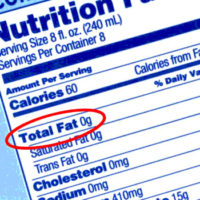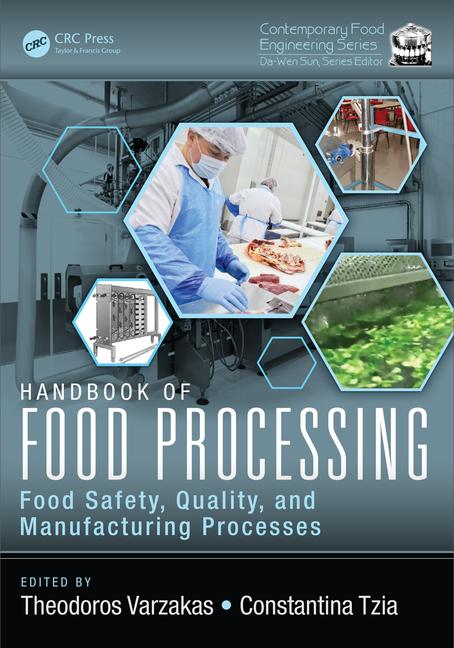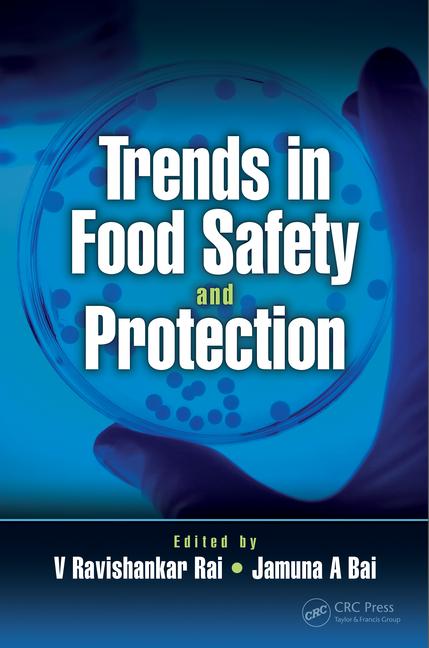New Labeling Requirements for Food Allergens and Trans Fat

Snack food manufacturers and other food processors that make products containing food allergens or trans fat face two major types of labeling changes, effective January 1, 2006. The Food Allergy Labeling and Consumer Protection Act of 2004 (FALCPA), enacted just this past August, mandates plain language labeling for the “Big 8” allergens—peanut, eggs, milk and milk by-products, wheat, tree nuts, soy, fish and shellfish—known to cause 90% of severe life-threatening reactions. The trans fat final rule, promulgated by the U.S. Food and Drug Administration (FDA) in July 2003, establishes trans fat as a mandatory nutrient that must be declared on a separate line in the standard Nutrition Facts Panel. With less than a year to the effective date, gaining a good understanding of these new requirements is key to the success of the food industry in achieving compliance.
Legislative History of FALCPA
In 1998, the FDA formed a partnership with the Minnesota Department of Agriculture and the Wisconsin Department of Agriculture, Trade and Consumer Protection in response to an increase of allergen-related recalls and concerns about controls of cross-contamination of undeclared allergen residue. The goals were to eliminate duplicate inspection and sample collections, ensure uniform enforcement, obtain current information on allergen awareness and provide feedback on useful allergy control information and training to the food industry.
One of the activities undertaken by these two states was an inspectional study of more than 80 food manufacturing establishments in Minnesota and Wisconsin to obtain an overview of industry practices as they pertained to allergen control. The states looked for the presence of peanut and egg allergens on food processing lines in the ice cream, bakery and candy industries—specifically, three ice cream, 31 bakery and six candy manufacturers in Minnesota and 10 ice cream, 23 bakery and 12 candy manufacturers in Wisconsin. Label verification, rework procedures, cross-contact prevention, and in general, allergen-control procedures used were reviewed in inspected firms. Firms were selected which made similar products with and without these two food allergens. During the inspections, samples of finished products that were not labeled as containing peanuts or eggs were collected for analysis at the state laboratories.
In March 2001, the states released a report on this inspectional study, and the results were striking. A major finding of the study demonstrated that 18 out of 73, or 25%, of final food product samples tested positive for peanut allergens even though peanuts were not declared on the product label. Positive products included one ice cream, one donut, eight cookies, two cookie dough and six candy samples. Ten percent of samples analyzed were positive for egg protein. Egg protein-positive products included three ice cream, one donut and one cookie sample.
 The findings were highly publicized at the time, bringing a great deal of attention to the fact that food allergens—in this case, allergenic residues found in foods not labeled as containing peanut or egg—were a much more common problem than many previously thought. This was especially important as approximately 11 million Americans suffer from food allergies. The report brought visibility to the issue of food allergens and was a catalyst for increased efforts by FDA to develop an action plan. In addition, the Grocery Manufacturers of America (GMA), the National Food Processors Association (NFPA) and the Food Allergy and Anaphylaxis Network (FAAN) formed a food allergen alliance that developed voluntary labeling guidelines to support the use of plain English language on food labels. These activities eventually led to the Food Allergy Labeling and Consumer Protection Act signed into law by President Bush in August 2004. FALCPA establishes specific labeling requirements for the “Big 8” major allergens.
The findings were highly publicized at the time, bringing a great deal of attention to the fact that food allergens—in this case, allergenic residues found in foods not labeled as containing peanut or egg—were a much more common problem than many previously thought. This was especially important as approximately 11 million Americans suffer from food allergies. The report brought visibility to the issue of food allergens and was a catalyst for increased efforts by FDA to develop an action plan. In addition, the Grocery Manufacturers of America (GMA), the National Food Processors Association (NFPA) and the Food Allergy and Anaphylaxis Network (FAAN) formed a food allergen alliance that developed voluntary labeling guidelines to support the use of plain English language on food labels. These activities eventually led to the Food Allergy Labeling and Consumer Protection Act signed into law by President Bush in August 2004. FALCPA establishes specific labeling requirements for the “Big 8” major allergens.
Allergen Labeling Requirements
Prior to this law, FDA required a complete list of ingredients on food labeling; however, there were exceptions. These exceptions—ingredients considered incidental additives, and spices, flavors and colors—were problematic because they were listed generically, which meant that, if any of these excepted ingredients contained a food allergen, the allergen was not explicitly listed. Thus, if a flavor or incidental additive used in a product contained a food allergen, it was essentially “hidden” under the generic label listing of “flavors” or simply not listed at all.
 If an ingredient was not incidental or otherwise exempted, FDA required that allergenic foods had to be identified by their “common or usual name” on the list of ingredients. However, the “common or usual name” of an ingredient is not always commonly understood. For example, the term “milk” is more commonly understood by consumers than “casein” or “whey,” which are both milk derivatives. In other words, the common or usual name is not necessarily in plain English, which poses a problem for consumers as they read the label.
If an ingredient was not incidental or otherwise exempted, FDA required that allergenic foods had to be identified by their “common or usual name” on the list of ingredients. However, the “common or usual name” of an ingredient is not always commonly understood. For example, the term “milk” is more commonly understood by consumers than “casein” or “whey,” which are both milk derivatives. In other words, the common or usual name is not necessarily in plain English, which poses a problem for consumers as they read the label.
The new allergen labeling law is designed to correct these two issues. FALCPA essentially stands for two principles: (1) plain English language labeling; and (2) no hidden allergens on food labels. The law takes a common-sense approach to labeling requirements by addressing the major food allergens that cause the vast majority, approximately 90%, of all allergic reactions. “Major food allergen” is defined as any of the following:
1) The “Big 8” food allergens: milk, egg, fish (e.g., bass, flounder), crustacean shellfish (e.g., crab, lobster or shrimp), tree nuts (e.g., almonds, pecans or walnuts), wheat, peanuts and soybeans; or
2) A food ingredient that contains protein derived from a food specified in paragraph (1), except any highly refined oil derived from a food specified in paragraph (1) and any ingredient derived from such highly refined oil; or a food ingredient that is exempt under procedures outlined elsewhere in the law.
As such, the plain English and no hidden allergens requirements under FALCPA relate specifically to the labeling of the eight major food allergens, with one specific exception stated in the statute. The allergen labeling law does not apply to highly refined oils because it is recognized that refined, bleached and deodorized oils do not present food allergen problems. Basically, the labeling requirement under the new law dictates that these “Big 8” allergens must be labeled by their common English names specific to the allergen source (i.e., milk is milk, not casein or whey) and that labeling applies to ingredients derived from the “Big 8” allergens that contain protein. FALCPA also requires explicit labeling for flavors, colors and incidental additives if they contain a “Big 8” allergen.
Allergen Labeling Format Requirements
The labeling format requirements for food allergens are straightforward and involve two formatting options from which food manufacturers can choose. The first option is to use a “contains” statement, which means that the word “contains” is followed by a list of all the major food allergens contained in the product. This phrase must be immediately adjacent to the ingredient statement. The second option is “parenthetical” listing, which means that—intertwined within the list of ingredients—the plain English name of all food allergens is included in parentheses behind their common or usual names; i.e., “casein (milk).”
Under this second option, a parenthetical listing is not required if the ingredient name already identifies the major allergen (i.e., “tuna gelatin (tuna)” is redundant) or if the name of the major food allergen appears elsewhere such as in the name of the product (i.e., “Sam’s Old-Fashioned Peanut Butter”). When considering which allergen labeling format to use, food manufacturers should be cognizant that the choice is one or the other for any given label; in other words, the manufacturer cannot use the “contains” statement for some ingredients and the “parenthetical” statement for other ingredients on the same label. This is to ensure ease of reading for the consumer: persons with food allergies will learn to look for the “contains” statement and, if not there, will know to read the entire ingredient listing carefully.
The FALCPA labeling format also requires the use of common English names for the major food allergens. Simply put, if the product includes milk, the label must say “milk.” If tree nuts are used in the product, they must be identified by the specific nut such as “almond,” “pecan” or “walnut.” Similarly, fish/shellfish must be identified by species, such as “tuna,” “bass,” “flounder,” “shrimp” and “lobster.” Consumers with food allergies are allergic to specific kinds of nuts, specific species of fish, and so on, and this labeling format requirement addresses that need for specificity. Figures 1 and 2 show the use of common English names in both the “contains” and “parenthetical” labeling format options.
FALCPA is self-executing, which means that FDA does not have to implement regulations. Rather, the agency enforces the legal requirement, which automatically becomes effective for any food labeled after January 1, 2006. A food that does not comply with the labeling requirements is deemed misbranded and would be subject to FDA enforcement action.
Ongoing FALCPA-Related Activities & Issues
Before FALCPA’s passage into law, some of the original provisions of the bill were repositioned and designated as studies, assessments and reviews to be conducted by FDA because Congress concluded it did not have enough information on certain issues to include requirements in the final legislation. Areas designated for further studies and reports include:
• Analysis of cross-contact issues in food processing and handling operations
• Review of Good Manufacturing Practices (GMPs)
• Review use of advisory (“may contain”) labeling
• Survey of consumer labeling preferences
• Review of allergen inspections conducted by FDA
• Assessment of food industry and government response to cross-contact issues
This list reflects the fact that FDA has much work to do in the area of food allergens and, depending on the results of these ongoing assessments, Congress may arrive at the conclusion that a follow-on food allergen law is necessary at a future date.
FALCPA also requires the FDA to take other actions, including directing the agency to conduct inspections of facilities to ensure they comply with practices to reduce or eliminate cross-contact of a food with residues of major food allergens that are not intentional ingredients of the food, and to ensure major food allergens are properly labeled. In addition, the new law requires FDA to issue a proposed rule within two years, and a final rule within four years, to define, and permit use of, the term “gluten-free” on food labels. Finally, FALCPA requires the agency to collect and publish national data on the prevalence of food allergies, the incidence of clinically significant or serious adverse events, and the use of different modes of treatment for and prevention of allergic responses to foods.
There are some remaining issues to be resolved, as well. One involves the two processes by which FDA can exempt ingredients from the requirements of FALCPA. A premarket notification process can be used by those seeking an ingredient exemption from FALCPA labeling requirements when scientific evidence shows that the ingredient does not contain an allergenic protein, or when, as part of a food additive review, FDA concludes that the ingredient “does not cause allergic response posing a risk to health.” Note that this exemption process is available only in the context of a food additive petition review, and not as part of a Generally Recognized As Safe (GRAS) notification review.
FDA also can exempt ingredients via a more lengthy petition process, which is available for ingredients that are ineligible for the notification process. The petition process places the burden of proof on the petitioner by requiring data showing that the ingredient does not present a concern to food allergic consumers. The challenge presented by this second exemption process is that there is not a large body of scientific data available that shows specific dose-response levels for potential food allergens. While the petition process provides a good conceptual framework for ingredient exemptions under FALCPA, the issue of what level of allergen poses a risk to health makes such a process difficult to implement at present.
An important issue under consideration by FDA and the food industry is whether some potentially allergenic ingredients used at very low levels should be exempt from the allergen labeling law requirements. For example, soy lecithin is a very common ingredient used in a large number of food products but at extremely low levels. The question is whether FDA can adopt a de minimis analysis in instances when the protein from an ingredient is present at such low levels that it does not present a safety concern to the food allergic consumer.
Trans Fat Labeling Regulation
The other significant label requirement change with a fast-approaching effective date is the Trans Fatty Acids in Nutrition Labeling final rule issued by FDA in July 2003. Trans fat is formed when liquid oils are made into solid fats like shortening and hard margarine. A small amount of trans fat is also found naturally, primarily in some animal-based foods. Trans fat can be found in some of the same foods as saturated fat, such as vegetable shortenings, some margarines, crackers, candies, cookies, snack foods, fried foods, baked goods, and other processed foods made with partially hydrogenated vegetable oils. Because trans fat behaves like saturated fat by raising low-density lipoprotein (LDL or “bad”) cholesterol that increases the risk of coronary heart disease, the regulation requires this nutrient to be listed on the Nutrition Facts Panel. This listing will provide quantitative information about the amount of trans fat in foods so that consumers can select foods with lower levels of trans fat and thereby lower their intake of trans fat as part of a heart-healthy diet. FDA estimates that three years after the effective date, trans fat labeling will prevent from 600 to 1,200 cases of coronary heart disease and 250 to 500 deaths each year.
Like FALCPA, the trans fat regulation has an effective date of January 1, 2006 and the basic requirements are straightforward. Food manufacturers are required to use quantitative labeling and to print the amount of trans fat in grams on a separate line in the Nutrition Facts Panel. The regulation permits the food manufacturer to claim “0 grams trans fat” if the amount of trans fat in the product is less than 0.5 grams. However, food manufacturers cannot claim “trans fat free” or “low trans fat” on the product label because FDA has not defined these terms.
Last February, the federal government issued dietary guidelines that also address trans fat. The advisory committee working on these guidelines took a strong position that trans fat should comprise less than 1% of calories in a given food product. Since approximately 1% of calories come from naturally occurring trans fat, this was tantamount to a recommendation that no trans fat should be allowed in any product. However, the final dietary guidelines do not include a percent-calorie number, but rather, recommend that the percentage of calories from trans fat should be as low as possible and that trans fat should be viewed in conjunction with saturated fat.
This last point is especially significant. It is important to view trans fat content in the context of saturated fat (and cholesterol) content as well. As companies seek to reformulate products, it is critical that any new product have an equivalent or improved fatty acid profile than the original product, or there will be no benefit to the public health. Although some product reformulation has already occurred, because of the current shortages in the supply of alternative oils that are suitable for this use, it will take several years for all appropriate reformulation to take place. In the meantime, consumers will have the benefit of quantitative labeling of trans fat on the nutrition label.
FDA estimates that the food industry will incur a one-time cost of approximately $140 to $250 million in complying with the trans fat labeling regulation, which includes the economic outlay for determining the amount of trans fat in the food products, relabeling the Nutrition Facts Panel to add trans fat, and reformulating products voluntarily to decrease the amount of trans fat. As noted, food manufacturers undertaking reformulation should consider both saturated and trans fat during the process to ensure that an equivalent or improved fatty acid profile in the final product has been achieved.
Self-Harmonizing the Effective Dates
Even though both FALCPA and the trans fat regulation post effective dates of January 1, 2006, the food allergen effective date is based by law on the “date of labeling” whereas the trans fat effective date is based on the “initial introduction into interstate commerce.” However, food manufacturers can effectively self-harmonize these effective dates by shipping products with old labels of trans fat-containing products prior to January 1, 2006. The key to the trans fat effective date is the date of the initial shipment of the product. Therefore, by shipping all trans fat-containing products with old labels prior to January 1, the company’s remaining products should be solely those that have been labeled in compliance with the regulation. This approach harmonizes the effective dates in that all products labeled on or after January 1, 2006 will be in compliance with both the trans fat regulation and the food allergen labeling law.
Ultimately, the January 1, 2006 effective date for both the food allergen labeling law and the trans fat labeling regulation is fast approaching. The time is now for food manufacturers to take the necessary steps to ensure that appropriate food products are labeled in compliance with these new labeling requirements.
Click here for a list of web resources on Allergen and Trans Fat Labeling.
Joseph A. Levitt is a partner in the Washington, D.C. office of Hogan & Hartson L.L.P. and a member of the firm’s Food, Drug, Medical Device, and Agriculture Practice Group. As a 25-year veteran of the U.S. Food and Drug Administration, Mr. Levitt focuses on the development and implementation of legislative and regulatory policy regarding the manufacture and marketing of food, drugs and medical devices and how to work effectively with FDA and related agencies.
Most recently, Mr. Levitt served as director of FDA’s Center for Food Safety and Applied Nutrition (CFSAN) from 1998 through 2003, where he led successful efforts to modernize food safety regulation and enhance the security of the U.S. food supply. During his 25-year FDA tenure, Mr. Levitt also helped streamline the new drug review process and launch the FDA’s food labeling initiative. Additionally, he served as deputy director for regulations and policy at the FDA’s Center for Devices and Radiological Health.
Mr. Levitt has received numerous honors and awards, including the FDA Award of Merit (four-time recipient), the Commissioner’s Special Citation (five-time recipient), and the DHHS Distinguished Service Award (three-time recipient). He has received three Presidential Executive Rank Awards, including Meritorious Level from President George Bush (1991) and from President William Clinton (1999), and Distinguished Level from President George W. Bush (2001).
Looking for a reprint of this article?
From high-res PDFs to custom plaques, order your copy today!








